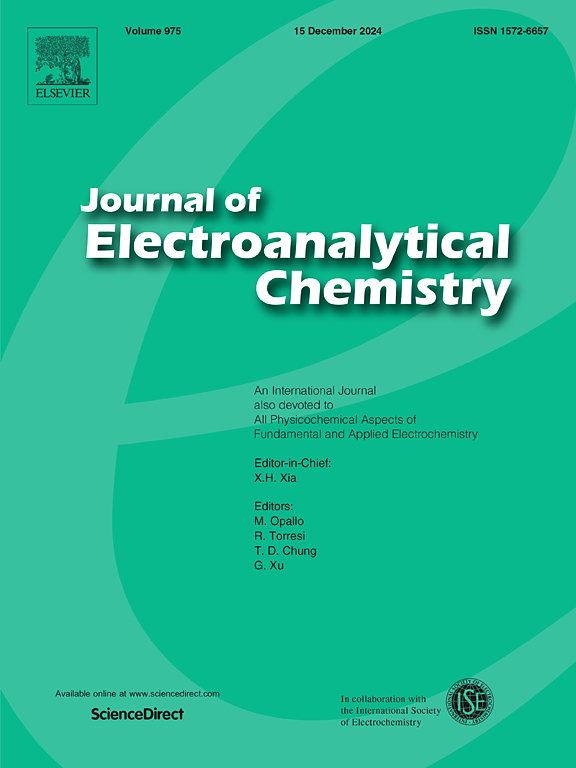Boosting electrochemical CO2 to formate conversion via oxygen vacancy-rich 2D SnO2 gas diffusion electrodes
IF 4.1
3区 化学
Q1 CHEMISTRY, ANALYTICAL
引用次数: 0
Abstract
The development of efficient and earth-abundant catalysts for the electrochemical reduction of CO2 into value-added products is crucial for the circular economy and mitigation of the greenhouse effect. However, CO2 presents high stability and low solubility in aqueous electrolytes, and efficiency is often limited by CO2 diffusion through the liquid medium to the catalyst surface. This study investigates the combined influence of SnO2 morphology (nanospheres and nanosheets) and oxygen vacancies density in the synthesized oxides on the selective electrochemical reduction of CO2 to formate (HCOO−), employing a flow cell configuration and a gas diffusion electrode (GDE). Under optimized conditions, oxygen vacancy-rich SnO2 nanosheets exhibited the highest CO2-to-HCOO− efficiency, achieving selectivity above 90 %, a current density greater than −200 mA cm−2, and stable operation for 5 h. XPS analysis revealed the coexistence of Sn2+ and Sn4+ species on the surface directly related to the oxygen vacancies, suggesting a key role of the mixed oxidation states in decrease the charge transfer resistance and enhancing catalytic performance. The HCOO− selectivity of SnO2-based catalysts gradually decreased over time at high current densities due to salt deposition and flooding processes.

通过富氧空位的2D SnO2气体扩散电极促进电化学CO2到甲酸的转化
开发高效且富含土壤的催化剂,将二氧化碳电化学还原为增值产品,对循环经济和减缓温室效应至关重要。然而,CO2在水电解质中具有高稳定性和低溶解度,并且效率往往受到CO2通过液体介质扩散到催化剂表面的限制。本研究采用流动电池结构和气体扩散电极(GDE)研究了SnO2形貌(纳米球和纳米片)和氧空位密度对CO2选择性电化学还原成甲酸盐(HCOO -)的综合影响。在优化条件下,富氧空位的SnO2纳米片具有最高的CO2-to-HCOO -效率,选择性达到90%以上,电流密度大于- 200 mA cm - 2,稳定运行5 h。XPS分析显示,Sn2+和Sn4+在氧空位直接相关的表面共存,表明混合氧化态在降低电荷转移阻力和提高催化性能方面发挥了关键作用。在高电流密度下,sno2基催化剂的HCOO -选择性随着时间的推移逐渐降低,这是由于盐沉积和水浸过程。
本文章由计算机程序翻译,如有差异,请以英文原文为准。
求助全文
约1分钟内获得全文
求助全文
来源期刊
CiteScore
7.80
自引率
6.70%
发文量
912
审稿时长
2.4 months
期刊介绍:
The Journal of Electroanalytical Chemistry is the foremost international journal devoted to the interdisciplinary subject of electrochemistry in all its aspects, theoretical as well as applied.
Electrochemistry is a wide ranging area that is in a state of continuous evolution. Rather than compiling a long list of topics covered by the Journal, the editors would like to draw particular attention to the key issues of novelty, topicality and quality. Papers should present new and interesting electrochemical science in a way that is accessible to the reader. The presentation and discussion should be at a level that is consistent with the international status of the Journal. Reports describing the application of well-established techniques to problems that are essentially technical will not be accepted. Similarly, papers that report observations but fail to provide adequate interpretation will be rejected by the Editors. Papers dealing with technical electrochemistry should be submitted to other specialist journals unless the authors can show that their work provides substantially new insights into electrochemical processes.

 求助内容:
求助内容: 应助结果提醒方式:
应助结果提醒方式:


